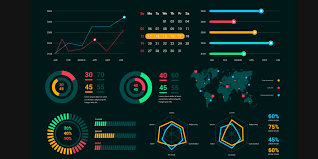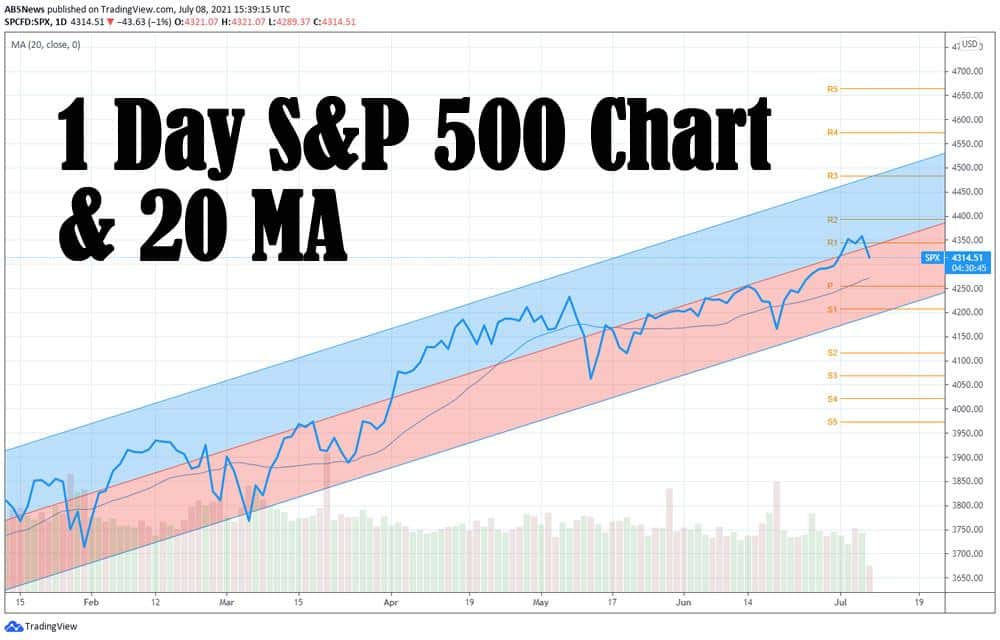Instagram is a powerful marketing tool for your business. Here’s how to make the most of it.
- Instagram is a popular social media platform that can also serve as a valuable business marketing tool.
- Create a business account on Instagram, and then use photos, live videos, and hashtags to market your business.
- Advertise your business through Instagram ads and use the platform’s sales function to sell your products.
- This article is for small business owners and marketers who want to use Instagram to grow and market their businesses.
Instagram is a leading photo-based social media platform, but it does more than keep you up to date on your friends’ adventures. Influencers and small businesses use Instagram as a tool for audience connection, engagement and sales.
Instagram’s robust business features are available only if you create a business or creator account. We’ll explore setting up your Instagram business account and show you how to take advantage of Instagram’s top connection, engagement and sales tools.
How to create an Instagram business account
If you don’t already have an Instagram account, you’ll create a personal account and convert it to a business profile. If you already have an Instagram account, it’s easy to convert it to a business account.
Create a new Instagram account.
If you don’t already have an Instagram account, here’s what to do:
- Download the Instagram mobile app for iOS, Android or Windows Phone on your smartphone or tablet. (You can also access Instagram via a web browser, but its functions are limited.)
- Tap Sign up.
- Enter your email address. Ideally, use your business email or an email designated for your business’s social media accounts. You can also log in with Facebook if you already have a business account there.
- Choose a username and password.
- You now have a “personal” Instagram account that you can convert to a business profile.
Convert your personal Instagram profile to a business profile.
Once you have a personal account, it’s easy to convert it to a business profile.
- Open Instagram and tap your profile picture on the bottom right.
- Tap Menu (three lines) on the top right.
- Tap Settings.
- Tap Account.
- Scroll down and tap Switch to Professional Account > Continue.
- Select the business category that most accurately represents your organization.
- Tap Done.
- Tap Business > Next. (Or tap Creator if you’re a content producer or influencer.)
- Review your public business contact info and make any necessary edits. Tap Next.
- Optionally, tap Login to Facebook and follow the prompts. Instagram recommends you connect to your Facebook Business Page to take full advantage of Instagram’s business tools, such as boosting your posts and stories and setting up shopping on Instagram.
- Follow the steps for setting up your professional account, including completing your profile, choosing other businesses to follow on Instagram, inviting friends to follow your account, and exploring professional tools like Insights (analytics about how your content is doing) and ad creation.
- Tap Done to finish creating your professional profile.
How to use Instagram for business
Between posts, ads and stories, there’s no shortage of potential small business marketing tools on Instagram. Here are some basics to help you start using Instagram for business.
1. Add professional-looking photos.
Instagram is a photo-sharing social media platform, so it’s essential to share visually engaging content. Generic photos won’t cut it. Take photos, edit them and take time to ensure you’re creating a cohesive grid on Instagram.
To add a new photo post:
- Tap Create (plus sign) at the top of your screen.
- Select Post.
- Tap the camera icon to take a new photo, or select a photo from your camera roll.
- Tap Next to choose filters and edit options.
- Tap Next and then write a caption, tag people and add a location.
- Optionally, choose to share the post to Facebook, Twitter and Tumblr.
- Tap Advanced Settings to control like and view count visibility, turn off commenting, and more.
- When you’re satisfied, tap Share to share your photo post.
Tip: To prevent copyright infringement on social media sites like Instagram, only post images that you’ve taken yourself or received explicit permission to use.
2. Use Instagram Stories.
Instagram Stories is a popular feature for personal accounts and business profiles. Instagram Stories comprise photos, videos and more that disappear 24 hours after posting them.
Instagram Stories lets you create a vibrant montage that can grab viewers’ attention and present more information than a traditional post. You can use recorded videos, still photos, live videos, boomerangs (videos that loop back and forth), text, music and focused photos.
Add stickers to show your location, the temperature, user tags and hashtags.
Interact with your viewers by creating polls and inviting questions, making it easy to collect valuable feedback. For example, some accounts use the questions feature to hold a weekly Ask Me Anything session, a fun way to answer common questions.
Use Instagram’s Stories Highlights feature to create categorized stores that stay on your profile so viewers can go back and watch them.
3. Stream live videos.
In addition to Instagram Stories, users can take and stream live video that disappears – sort of like a cross between Facebook Live and Snapchat. Give customers a live look behind the scenes of exciting aspects of your business, show products or answer live questions via the comments.
Once the video ends, it lives in your Instagram story for 24 hours. If you want a video to remain on your Instagram feed, upload a video you’ve taken or shoot one directly through the app to post. If you choose to shoot or upload a video, you can still add filters and change the cover.
4. Interact with your followers.
As with any social media platform, it’s crucial to engage and interact with your followers on Instagram.
- Liking: Liking is an easy way to connect with other users. To like a photo, double-tap the image or tap the heart button under the post.
- Commenting: To comment on a post, tap the comment icon (speech bubble), and the app will take you to that post’s comments page. Type your comment into the text box, add emojis if you like and tap Post.
- Mentioning: As on Twitter, use the @ symbol to tag other users in your Instagram comments or post captions. They’ll be alerted to the mention and may circle back and interact more.
- Tagging: Instagram allows you to add tags before and after posting content. To do so, tap Tag People before sharing your photo, and tap where you want to add the tag in the photo. The app prompts you to type in the person’s name to search for their account. Once you’ve tagged people in your photo and shared the image, other users can tap on the photo to see the tagged people.
- Direct messaging: To access Instagram Direct, go to your home page and tap the Messenger icon on the top right. (Facebook’s Messenger is integrated into Instagram.) Send private instant messages, including photos and videos, to other users. To send a new direct message, tap the notepad button in the top right corner and search for the person or business you want to contact. Once you’ve sent the message, you and the recipients can message back and forth. Users who are not already following you will be asked whether they want to allow you to send them photos and videos before they can view your DM.
5. Use hashtags.
Hashtags are an excellent way to help users find content on Instagram. Hashtags can include letters and numbers, but they can’t contain any non-numerical characters. For example, #DaveAndBusters works as a hashtag, but #Dave&Busters does not.
Because users can search for hashtags and click on hashtags they see in posts, relevant hashtags can be a highly effective tool for getting noticed. However, ensure you’re using the right hashtags for your brand.
Follow these best practices for hashtags:
- Use relevant hashtags. Hashtags such as #nofilter (a photo that hasn’t been heavily edited with filters), #selfie (a picture of yourself), and #tbt or #throwbackthursday (old photos) are popular on Instagram, but they may not work for you or your brand. Look at other established brands or users and bloggers in your industry for examples of what hashtags to use.
- Don’t use excessive hashtags. Instagram allows 30 hashtags in a post or comment (and up to 10 in an Instagram story), but that many would be excessive. The fewer hashtags you can use to get quality responses, the better. Using many popular hashtags might earn you a lot of likes from other users, but it probably won’t increase your following all that much, and the interactions you get will likely not be from people interested in your brand, but rather those who saw and liked your image.
- Experiment with hashtags. Once you understand hashtags, branch out and experiment to find which ones work best for your brand. It’s also smart to create a custom hashtag for your business or an event you’re hosting. This way, customers can follow along with an event, even if they aren’t there in person.
6. Use Instagram Reels.
Instagram Reels are short, entertaining videos that can help you bring your brand to life. Offer a behind-the-scenes tour, or show how your product is made. Add effects and transitions, tag products from your catalog, showcase paid partnerships, and more.
Reels are an excellent way to create a campaign for a specific target customer or expand on an Instagram story’s product or service focus.
To get started making a Reel, tap Create (plus sign) from your home page and select Reel.
7. Advertise on Instagram.
Like on other social channels, businesses can advertise on Instagram. You have a few options to consider.
To create a new Instagram ad, you choose from three basic formats: photo, video and carousel ads.
- Photo ads: These look like regular photo posts, but they have a Sponsored label above the photo. They also have a call-to-action button at the bottom right of the photo. Many photo ads are boosted posts, where you pay to amplify an existing post’s reach.
- Video ads: Like the photo ads, these look like regular video posts but with a Sponsored label on top.
- Carousel ads: These ads look identical to photo ads but feature multiple photos that users can swipe through.
Of course, you also have other advertising options on Instagram.
- Instagram Stories ads: Instagram Stories ads appear when users tap through other accounts’ stories. Stories ads use the entire device screen, so ensure you’re using a visually captivating image.
- Collection ads: Collection ads feature a main image with a product catalog at the bottom. This is an excellent way to invite viewers to explore your products.
- Explore ads: Explore ads appear on a user’s Explore page, where Instagram presents posts that might appeal to their interests. Explore ads are an excellent way to get your business in front of people likely to be interested in your brand.
When you advertise on Instagram, you can go through the Instagram app or the Facebook Ads Manager (if your account is connected to your business Facebook Page). Both options let you choose your ad’s objective, set an audience base, determine the ad’s budget and set the length of time it will run. Facebook’s Ads manager offers additional configuration, formatting and demographic options.
Instagram ad objectives include video views, click-throughs to your website, mobile app installations and mass awareness.
Tip: Need help with your overall social media marketing strategy? Visit our comprehensive overview of social media marketing solutions. Before paying for a solution, though, develop a marketing budget to figure out what specific services you can afford.
7. Obtain audience insights.
Anyone with a business account can access insights about their audience and engagement levels. In your Instagram business account, open the menu and tap Insights to see metrics on your followers and their activity with your content. On any individual post, tap View Insights to see metrics for that post.
The information you glean from Insights can help you optimize your posting schedule, pinpoint your target audience and find out what’s working.
8. Sell products on Instagram.
Instagram is a great way to start selling online. In November 2020, Instagram added the Shop tab, allowing users to discover and purchase products from brands directly through the app. Instagram’s Shop functionality is likely a response to continuous social media and mobile shopping growth.
You can sell your products under the Shop tab or create shoppable posts by adding product tags to your posts, stories, and reels.
To set up shopping on Instagram:
- Connect your Instagram business account to your Facebook business page.
- Confirm that Instagram supports your market.
- Choose whether you want to set up shop using Facebook’s Commerce Manager or a supported partner like Shopify.
- Create your shop in Commerce Manager or your platform.
To complete a transaction, users enter their name, email address, billing info and shipping address. Meta, Instagram’s parent company, will save that data for future transactions. Users can pay via Visa, Mastercard, American Express, Discover and PayPal.
Key takeaway: To maximize Instagram for your business, connect it to your Facebook business page, interact with other users, use hashtags thoughtfully, post quality photos, and set up a shop.
Instagram tips and tricks
Follow these tips to get the most out of your Instagram business account:
- Don’t try to put links in Instagram captions. Your profile is the only place you can share a working link that takes users to a website. Links don’t work in captions or photo comments. If you want to direct people to a specific website, change the default link in your bio to that URL, and note in the caption that the link is in your bio.
- Ensure posts relate to your brand. It can be tempting to share photos of food, fashion and animals because they’re popular on the platform. But if your business has nothing to do with those things, it could make you look disjointed and confuse your followers.
- Run giveaways and promotions. Post an image advertising your giveaway, sale or contest, and ask users to repost that image with a specific custom hashtag to enter. Search for that hashtag to see who has reposted it, and pick a winner. Promotions allow your customers and followers to market your brand for you by talking about your promotion on their profiles, driving more people to your profile. If you decide to run a contest or sweepstakes, be sure to follow social media contest guidelines.
- Respond to followers’ comments. When people comment on your photos, be sure to reply. Interacting with customers and followers shows you’re paying attention and care about what they say. They’ll be more likely to continue following you and interacting with your posts if they know they’re important to you.
- Embed Instagram posts on your website. From the desktop version of Instagram, you can get an embed code to add specific images and videos to your company’s website. This shows visitors that you’re active on Instagram and can help you gain more followers. Select the photo you want to embed, click More (three dots) in the bottom right corner and then select Embed. This pulls up a box with the embed code and gives you the option to display the caption. From there, copy and paste the code where you want it to go on your website.
- Use Instagram influencers to promote your business. Influencers can serve as brand ambassadors for your business. Influencers are people with a significant following on Instagram. Find influencers who are a natural, organic fit for your business and who will be genuinely enthusiastic about promoting your products. You’ll pay some influencers, while others will accept free products as compensation.
- Share posts directly to your story. If a client posts a photo of your product, share the post directly to your story to highlight the product and your client. With this feature, small businesses can interact with followers while promoting their products or services.
- Use polls and other features in your stories. Instagram offers many interactive features for building online conversations and relationships. For instance, use the interactive questions sticker in Instagram Stories so followers can submit questions for you to answer. This is a fun and easy way to interact with your followers.
- Use video. Instagram has several ways to incorporate video. Reels are vertical videos you can access from the bottom-center button of the Instagram mobile app. They last up to 60 seconds and are a great way to feature new products, highlight your work or engage with customers. Instagram feed videos can be up to 60 minutes long and are excellent for long-form content. (Feed videos replaced IGTV, Instagram’s previous long-form video format.) Instagram Live videos and Instagram Stories videos are other options.
Tip: Use a video app to create social media posts with time-lapse videos, GIFs, and long or short video clips.
Instagram terminology
To get the most out of Instagram, stay up to date on the social media platform’s terminology.
- Bio: Your bio is the biography section in your profile. Businesses can also use their bio to include a call to action.
- Direct messages (DMs): Users can privately communicate with each other through direct messages. If a customer has a complaint or question, follow live chat best practices to resolve the issue via private direct message. Direct messages are often referred to as “DMs.”
- Filters: Apply preset filters to your photos to enhance features and colors.
- Follow: When you follow a user on Instagram, you’ll see their content in your timeline. You can also view their Instagram Stories at the top of the app.
- Followers: Your followers are people who will see your pictures in their timeline and your Stories at the top of the app.
- Hashtag (#): Like Twitter hastags, a hashtag (marked with the pound sign) on Instagram is used to index words or phrases. When you click on a hashtag, you’ll see other posts with the same one.
- Highlights: A highlight reel of your Instagram Stories appears on your profile above your photo gallery and stays until you remove it.
- Home: Tap the home button in the bottom-left corner to land on your home screen, which is also your timeline or feed. Here you’ll see photos from those you follow.
- IG: IG is an abbreviation for Instagram.
- Instagram handle: Your handle is your username. To mention a user on Instagram, you must use their handle, which always starts with the @ symbol.
- Instagram Stories: Stories is one of the most popular features on the platform. These pictures and videos disappear after 24 hours.
- Reels: Reels are short videos users or brands can post for engaging content. Reels are Instagram’s answer to TikTok.
- Tag: There are a few ways to tag people on Instagram, including in a photo’s caption, in Instagram Stories and in photos. Use the @ symbol to tag someone in a caption or an Instagram story. You can tag someone in your photos before you post the picture.
Read & Write : write for us
 Lifeyet News Lifeyet News
Lifeyet News Lifeyet News





